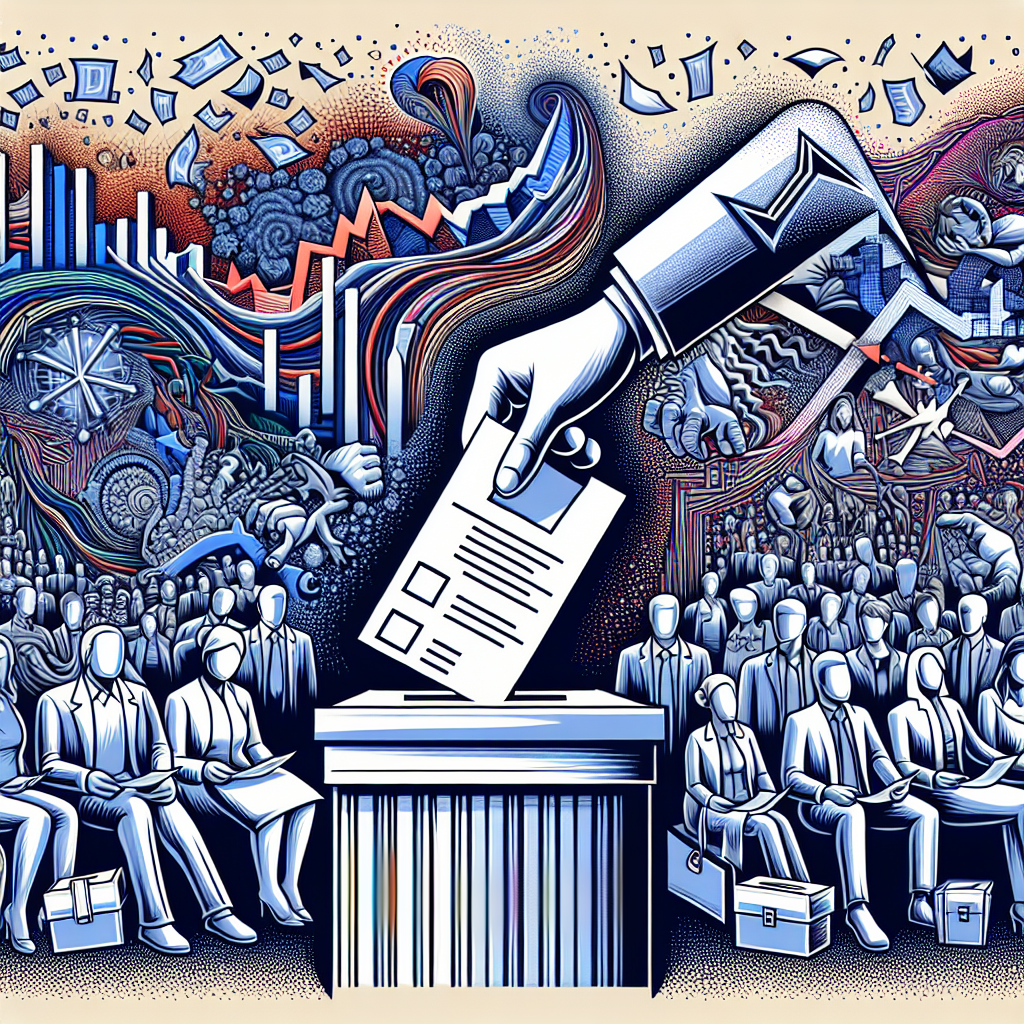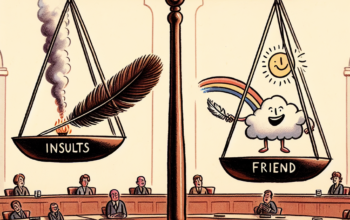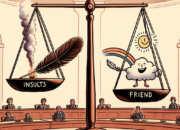Understanding the Dynamics of Voter Behavior in Changing Economies: A Comprehensive Analysis
In 2025, the landscape of global economies is continually evolving, impacting a wide array of societal elements, including voter behavior. Understanding the dynamics of voter behavior in changing economies has become increasingly important for political analysts, economists, and policymakers alike. Economic fluctuations can significantly alter how citizens perceive candidates, parties, and policies, thus shaping electoral outcomes. This article delves deep into the various factors influencing voter behavior amid these economic changes, offering insights that are crucial for navigating the political landscape in the modern economy.
Economic Uncertainty and Voter Motivation
Economic uncertainty has a profound impact on voter motivation and behavior. In times of recession or economic downturn, voters are more likely to express dissatisfaction with the current administration, leading to a shift in political allegiance. In 2025, many countries are grappling with inflationary pressures, supply chain disruptions, and rising living costs, causing citizens to prioritize economic stability over ideological alignment. When voters perceive their economic well-being is at stake, they become more likely to support candidates who promise immediate relief or radical systemic changes.
Furthermore, emerging economic trends can lead to shifts in voter demographics. For instance, younger voters, who may be disproportionately affected by student debt and unemployment, often lean toward progressive policies. In 2025, as job automation and technological advancements reshape labor markets, we are seeing a pronounced emphasis on policies advocating for universal basic income and job retraining programs. Understanding these demographics is essential for political campaigns aiming to mobilize specific voter segments during elections.
The Role of Information and Misinformation
In the digital age, the dissemination of information plays a critical role in shaping voter behavior. Social media and online news platforms have become key channels for political discourse, allowing immediate access to information. However, this rapid flow of information also opens avenues for misinformation and disinformation, which can dramatically influence public perception. In 2025, the rise of AI-generated content has made it increasingly challenging for voters to discern credible information from fabricated narratives.
Consequently, misinformation can skew voter preferences, particularly in economically distressed areas where traditional media may be less accessible. Candidates and political parties leveraging digital campaigning must not only convey their messages effectively but also combat misinformation to maintain voter trust. In this environment of fluctuating facts and narratives, a well-informed electorate becomes crucial for a healthy democracy, and understanding the sources of information that resonate with voters is essential for political strategists.
Socioeconomic Factors and Their Impact on Voting Trends
The interplay between socioeconomic factors and voter behavior is multifaceted. In 2025, disparities in income and education levels continue to have a noticeable impact on voting patterns. Research suggests that individuals from lower socioeconomic backgrounds often vote based on immediate economic concerns, such as job security and healthcare access, rather than long-term ideological frameworks. This reality requires political campaigns to focus on tangible policies that address voters’ pressing economic challenges, encouraging turnout among these demographics.
Moreover, as economies become increasingly interconnected, voters are influenced by global events that impact local economies—such as trade agreements, climate change, and international conflicts. Economic policies at the national level, particularly regarding taxation and welfare, become decisive factors for voters. Candidates who can successfully address these interconnected issues tend to establish stronger connections with constituents, ultimately impacting their chances of winning elections. Hence, understanding how socioeconomic divides shape political allegiances is critical for crafting resonant campaign strategies in today’s dynamic environment.
Identity Politics and Economic Concerns
As economies shift, so too does the role of identity politics in shaping voter behavior. In 2025, identity-based issues—such as race, gender, and sexual orientation—are increasingly intertwined with economic concerns, reflecting a more holistic approach to voter engagement. Candidates that acknowledge the intersectionality of these issues often gain traction with diverse voter bases. Economic frustrations can amplify identity issues; for example, communities that have historically faced economic disadvantages are more likely to support candidates that center their platforms around equity and social justice.
Additionally, in economically turbulent times, voters may gravitate towards candidates who authentically represent their experiences and advocate for policies that promote inclusivity. This trend has led to the emergence of new political movements that prioritize the needs of historically marginalized groups while simultaneously addressing economic disparities. As political parties take note of these shifts, the dynamics of voter behavior will likely continue evolving, necessitating an agile and responsive approach to campaigning.
The Influence of Policy Proposals on Voting Behavior
The policies proposed by candidates can significantly sway voter behavior, especially in economically uncertain times. In 2025, voters are increasingly discerning, placing a premium on concrete, actionable policies rather than vague promises. Campaigns that present comprehensive plans to tackle economic issues, like affordable housing, healthcare reforms, and job creation, are more likely to resonate with constituents. For example, a candidate advocating for a robust public healthcare system amid rising healthcare costs may gain support from voters prioritizing economic stability and access to essential services.
Additionally, grassroots movements advocating for policy change can mobilize voters more effectively than traditional top-down approaches. When citizens see their economic struggles reflected in specific policy proposals, they are more likely to feel compelled to participate in the voting process. Emotional connections to policies, particularly those directly addressing their circumstances, can ignite a sense of urgency that drives voter turnout. Understanding how to communicate these policy proposals convincingly is, therefore, imperative for any successful campaign aiming to engage voters in today’s changing economy.
Future Trends in Voter Behavior
Looking ahead, the dynamics of voter behavior in changing economies are anticipated to evolve further. With the continued growth of digital platforms, voters will likely become even more engaged in political discourse, informing their preferences based on their interactions with both real and virtual communities. As economic conditions fluctuate, new issues will arise, shaping the priorities of the electorate and the strategies of political campaigns. Understanding these shifts will be crucial for future elections.
Moreover, as younger generations, particularly millennials and Generation Z, come into their own as the largest voting bloc, issues surrounding climate change, social justice, and technological innovation will take precedence in shaping voter preferences. Politicians who can effectively integrate these values into their economic agendas stand to thrive in the coming years. Therefore, staying attuned to the evolving economic landscape and its implications for voter behavior will be vital for political parties aiming to remain relevant and competitive.
Conclusion
In conclusion, understanding the dynamics of voter behavior in changing economies is critical for both political leaders and policymakers in 2025. Economic uncertainty, the flow of information, socioeconomic disparities, identity politics, and policy proposals all intersect to shape how citizens engage with the political process. As we move forward, recognizing these factors while adapting to future trends will be essential for fostering an informed electorate and ensuring that democratic processes reflect the will of the people amidst economic changes.
FAQs
1. What factors influence voter behavior in changing economies?
Voter behavior is influenced by factors such as economic stability, misinformation, socioeconomic conditions, identity politics, and policy proposals. Each of these elements interacts uniquely to shape how individuals perceive and engage in the electoral process.
2. How does economic uncertainty impact voter turnout?
Economic uncertainty often leads to increased voter dissatisfaction with the current administration, motivating individuals to vote for change. Additionally, pressing economic concerns such as unemployment or inflation can drive higher turnout as voters seek to address their immediate needs through the electoral process.
3. What role does misinformation play in shaping voter preferences?
Misinformation can skew public perception and lead voters to make decisions based on inaccurate information. In an environment flooded with digital content, distinguishing credible sources becomes increasingly challenging, making it essential for campaigns to combat misinformation effectively.
4. How can political campaigns address socioeconomic disparities?
Political campaigns can address socioeconomic disparities by developing targeted policies that resonate with the concerns of economically vulnerable populations. By emphasizing immediate economic relief and tackling systemic inequalities, candidates can better engage these voters.
5. What future trends may influence voter behavior?
Future trends likely to influence voter behavior include the growing role of digital platforms in political discourse, the prioritization of issues by younger generations, and the impact of ongoing economic developments on the electorate’s values and preferences.












